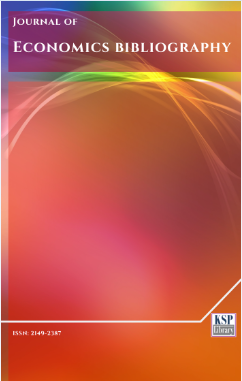Taxpayers Subsidise Private Money Creation
Abstract
Abstract. Publicly created money, i.e. base money, costs much less to produce than privately created money because amongst other things private banks have to check up on the credit worthiness of borrowers before supplying them with money. In contrast governments do not need to do those checks when creating and spending base money into the economy. It might be claimed that the cost of private money creation is the cost of organising loans and hence that the cost of private money creation as such is not particularly high. That claim does not stand inspection. Despite the high cost of private money, it nevertheless manages to drive public money to near extinction (except in the current very low interest scenario). Reason is that private banks can create and lend out money at below the going rate of interest because they are not burdened with one of the main costs normally involved in lending, namely earning money and abstaining from consumption (so that borrowers can consume.) When an economy is at capacity, the result of that extra lending is inflationary, so government has to withdraw base money from the economy, i.e. rob taxpayers, in order to counteract the inflation, for example by cutting the deficit / raising the surplus or by raising interest rates. In short, private money printing is subsidised by taxpayers, and subsidies reduce GDP, unless there is a good reason for a subsidy. The net result of letting private money displace base money is an artificially low rate of interest and an artificially high level of debt, plus GDP is reduced. Thus GDP would be increased if privately issued money was banned, though its complete elimination is not necessary.
Keywords. Money and interst rates, Money policy, Banking system, Government policy.
JEL. E40, E50, G21, G28.Keywords
References
FDIC. (2005). Rate/Volume Analysis: An Off-Site Approach to Measuring Interest Rate Risk. FDIC Outlook. [Retrieved from].
Friedman, M. (1960). A Program for Monetary Stability. New York: Fordham University Press.
Huber, J., & Robertson, J. (2001). Creating New Money. London: New Economics Foundation.
McLeay, M.R., & Ryland T.R. (2014). Money creation in the modern economy. Bank of England Quarterly Bulletin. 54(1), 14-26. [Retrieved from].
Selgin, G. (2012). Is fractional-reserve banking inflationary?. Capitalism Magazine. [Retrieved from].
St Louis Fed. (2016). St Louis Adjusted Monetary Base. [Retrieved from].
Wolf, M. (2014). Warnings from Japan for the Eurozone. Financial Times. 4th November. [Retrieved from].
DOI: http://dx.doi.org/10.1453/jeb.v3i2.740
Refbacks
- There are currently no refbacks.
.......................................................................................................................................................................................................................................................................................................................................
Journal of Economics Bibliography - J. Econ. Bib. - JEB - www.kspjournals.org
ISSN: 2149-2387.
Editor: [email protected] Secretarial: [email protected] Istanbul - Turkey.
Copyright © KSP Library

